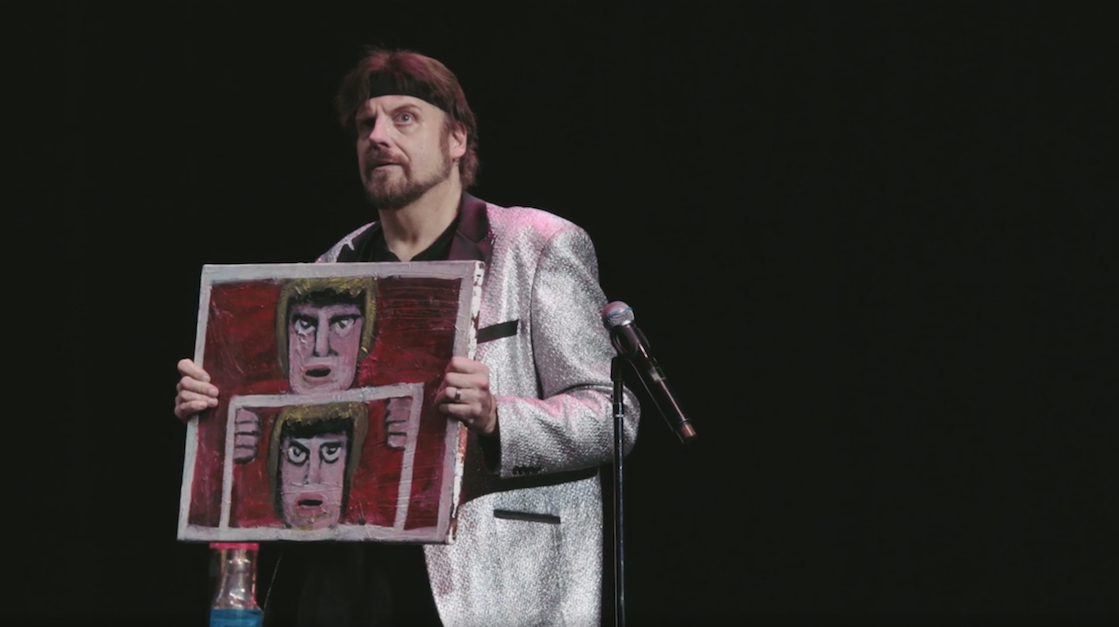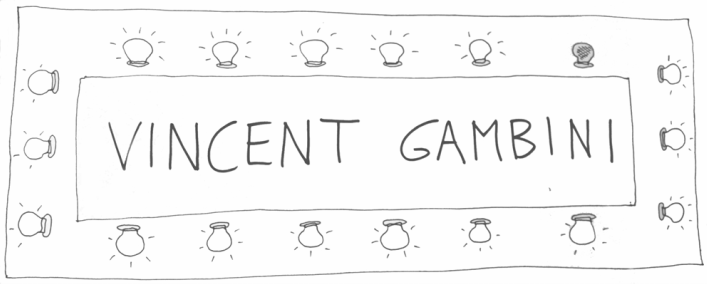
I am drawn to the self-reflexive turn that allows audience and artists to engage with, and to question, the very encounter between audience and artist.
At its best, this kind of ‘meta’ work can provide something like an epiphany, a surprising realignment of mind and reality, like pressing reset on how we think of art and, by extension, the world. It is an intervention into thought itself.
It seems to me that, when art really engages the self-reflexive mode (think Robert Morris’ Box with the sound of its own making), what happens is this: the ‘content’ of the piece (what the piece is about) and the ‘form’ of the piece (the material or images on display) begin to merge into one ineffable experience, close to the limit of language or sense. The relation between reality and fiction, which most of the time is always kept in check, is turned upside down. And this capsizing, when executed well (by both the artist and the audience), brings deep philosophical child-like wonder: it challenges ingrained habits, causes us to rethink how we approach not just art but pretty much anything in life.
Fiuuu.
I write this after seeing The Amazing Jonathan Documentary (2019) by Ben Berman. It is a difficult and oh-so-rewarding journey of one ‘documentarian’ (Berman), whose attempts at documenting US magician the Amazing Jonathan’s final comeback tour are thwarted by, among other things, another documentary being made at the same time. In the jostling for filming that ensues, what starts to happen is that the documentary starts to chart the story of its own possible undoing: will it ever get made? Who is best positioned to tell this story? How can the documentary-maker maintain the momentum to carry on with the project?
I’m a fan of artworks that tell the story of their own making: Roland Barthes’ most famous book, Camera Lucida, is written as an essay in search of its subject (the elusive essence of photography), incorporating wrong turns, blind spots and hesitant revelations. And this documentary does exactly this: it is a search for itself.
Like panning back from two mirrors placed facing each other, jumping from a frame, to within another frame, to within another frame, etc. this film doesn’t shy away from plunging you into the genuinely uneasy ethical confusion over the medium itself: about two thirds of the way in, one might feel a little seasick at the conundrum faced by the documentarian, but we follow through with him, to an ending that so beautifully captures the melding of fiction and reality that it alone is worth the whole documentary.
The Amazing Jonathan Documentary is not really a story about its titular subject (the US magician); rather, it is a story about how stories are told, and the price to pay in doing so. Of course, since the Amazing Jonathan is a magician, the film does occasionally delve into magic clichés, of the ‘what can you really believe…is it all an illusion?’ variety. But luckily it doesn’t dwell there too long. Amazing Jonathan’s magical profession is not the concern here: what matters most is his personality, as a Vegas entertainer who is keen to use whatever opportunities come his way, including having competing crews filming a documentary at the same time.
I adore what Ben Berman has pulled off here, and part of the satisfaction of the film is simply seeing him slowly realise what he’s up against, and stumbling, making mistakes, yet daring (fearfully) to go further, to embrace the weirdness, and to open up to what chance is providing, both in his life and in his documentary.

 RSS Feed
RSS Feed